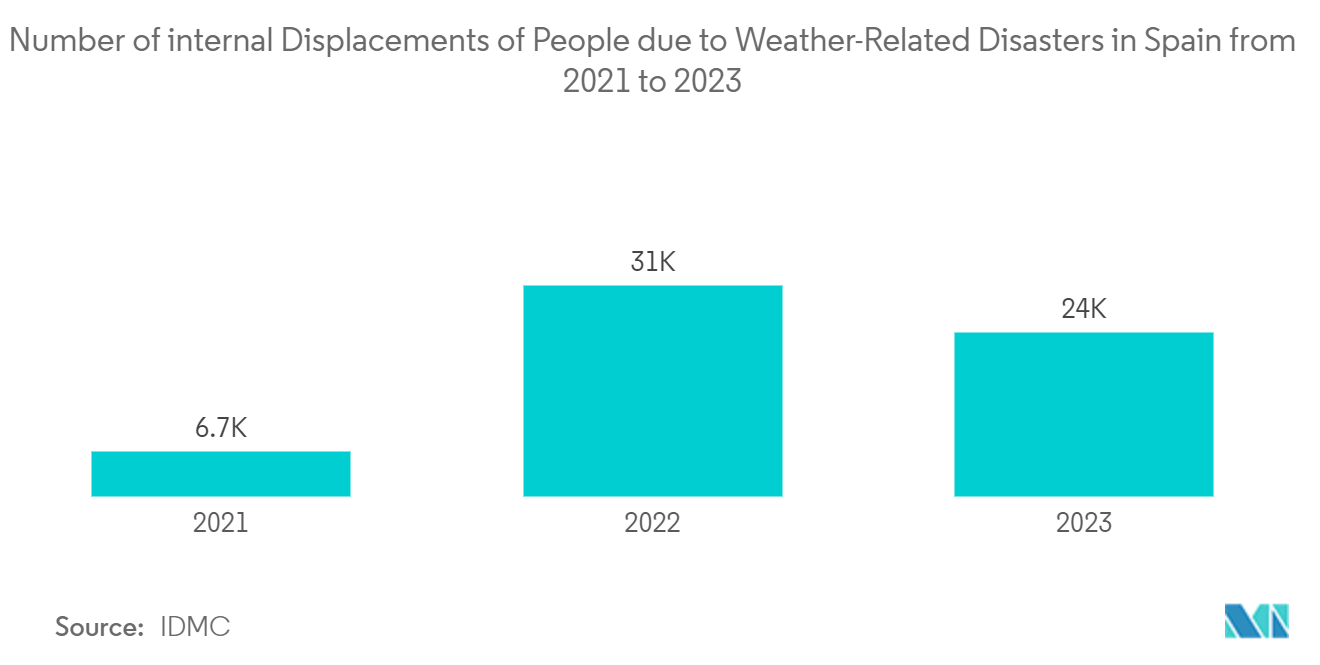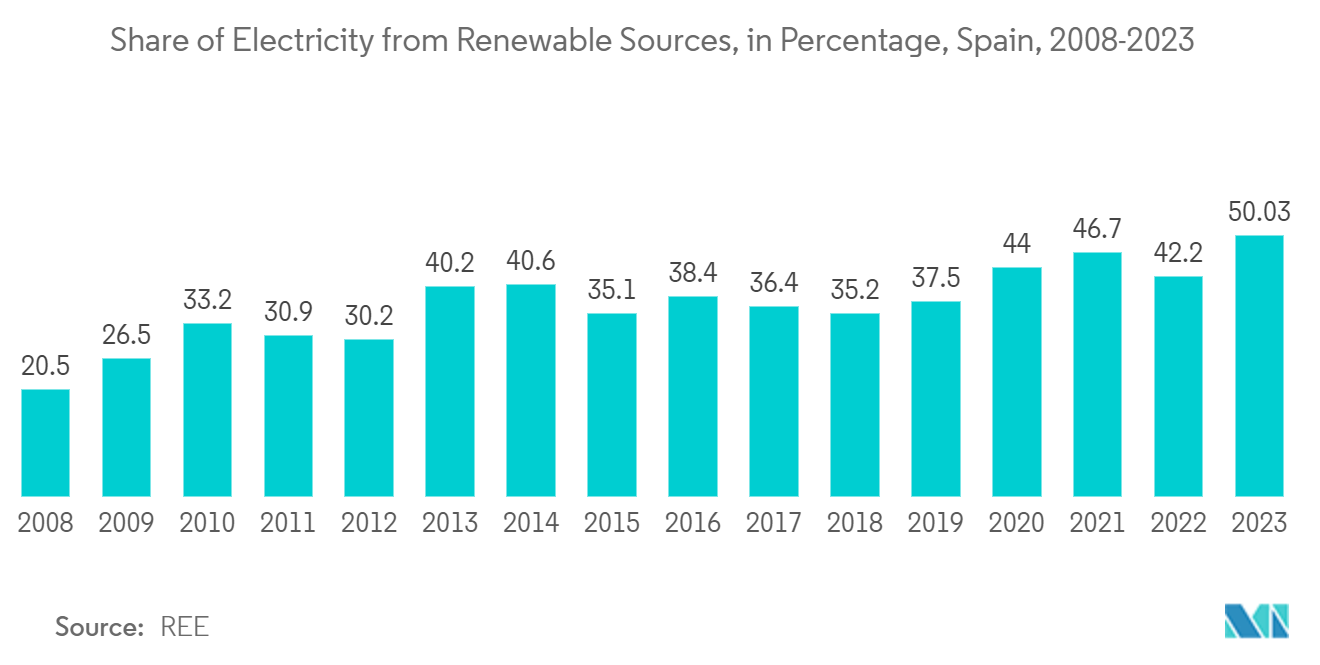Market Trends of Spain Satellite-based Earth Observation Industry
Rising Need to Generate Big Data to Offer Accurate Insights into Earth Observation
- The earth observation market in Spain is continually expanding with the integration of new technologies, sensing modalities, and unconventional data sources. Further, as the demand for earth observation data increases to address environmental concerns, population challenges, climate disasters, etc., the demand for capturing the earth observation data on various scales increases, thus increasing the demand for satellite-based Earth observation.
- Further, data from EO programs continues to grow exponentially, and an enormous amount of raw data will need to be processed and made available to become available. This has increased the demand for EO data analytics in the satellite-based earth observation market. Technological advances in the past few years have allowed for more and better insights resulting from the earth observation data, thus positively driving the growth of the studied market.
- Further, the growing demand for data analytics to provide accurate insights into the earth observation across various industries according to their requirements demands a large amount of data. This has led to the emergence of new startups and funding in the data analytics field in the country, thus positively impacting the growth of the market. For instance, according to the Fundación Innovación BankinterFurther, Spanish startups active in the business and productivity sector received the most venture capital, corporate, and private equity capital (EUR 530 million) from investors. Barcelona-based Typeform, which offers data analytics services, received EUR 123 million in funding.
- Additionally, the earth observation data is gaining significant uses in various end-user sectors, thus further providing growth prospects to the market. For instance, in April 2023, Egis teams announced to completion of an innovative pilot project on behalf of the City of Valencia in Spain to demonstrate how Earth observation data and the European Union Agency for the Space Programme 'EUSPA' from Copernicus could support decision-making at the municipal level to improve quality of life for citizens. The twelve-month project identified use cases spanning urban planning, climate change mitigation, emergency management, and natural resource management.

Energy and Raw Material Segment is Expected to Gain Significant Traction
- The energy and raw material segment is expected to witness significant adoption of satellite-based earth observation solutions in Spain as EO has multiple applications related to renewable energy and raw materials: for instance, helping select locations with optimal conditions (e.g., forecasting UV radiation or wind conditions for renewables and assessing abundancy of certain minerals for mining) or planning and monitoring the construction process.
- Further, the increasing power crisis and rising electricity prices, coupled with the growing focus on sustainability in the country, are driving the demand for renewable energy sources. Various stakeholders such as governmental authorities, energy and utility companies, energy traders and supply chain managers, and mining companies get benefitted from satellite technologies that can provide invaluable data in the form of various Earth Observation applications.
- The country is making substantial investments in the renewable energy field and rapidly transitioning from non-renewable energy sources to renewable energy sources. Goals on climate neutrality drive innovation in the energy and raw materials market and subsequently increases the demand for satellite-based earth observation solutions to provide an innovative and cost-effective way to support asset planning, asset management, and risk management in energy production. For instance, according to the data from REE, the share of energy from renewable sources in electricity generation in Spain increased from 20.5% in 2008 to 42.2% in 2022.
- Furthermore, EO applications related to renewable energy production are more widely used in planning and monitoring. Earth observation data are also used in forecasting and nowcasting models in the energy and raw materials segment. This results in more precise data and helps electricity grid operators to adapt their production quickly. EO data can also be used for mapping different city zones to better understand the amount, regularity, and distribution of electricity needs. Such factors further support the growth of the satellite-based earth observation market in the energy and raw material field.


